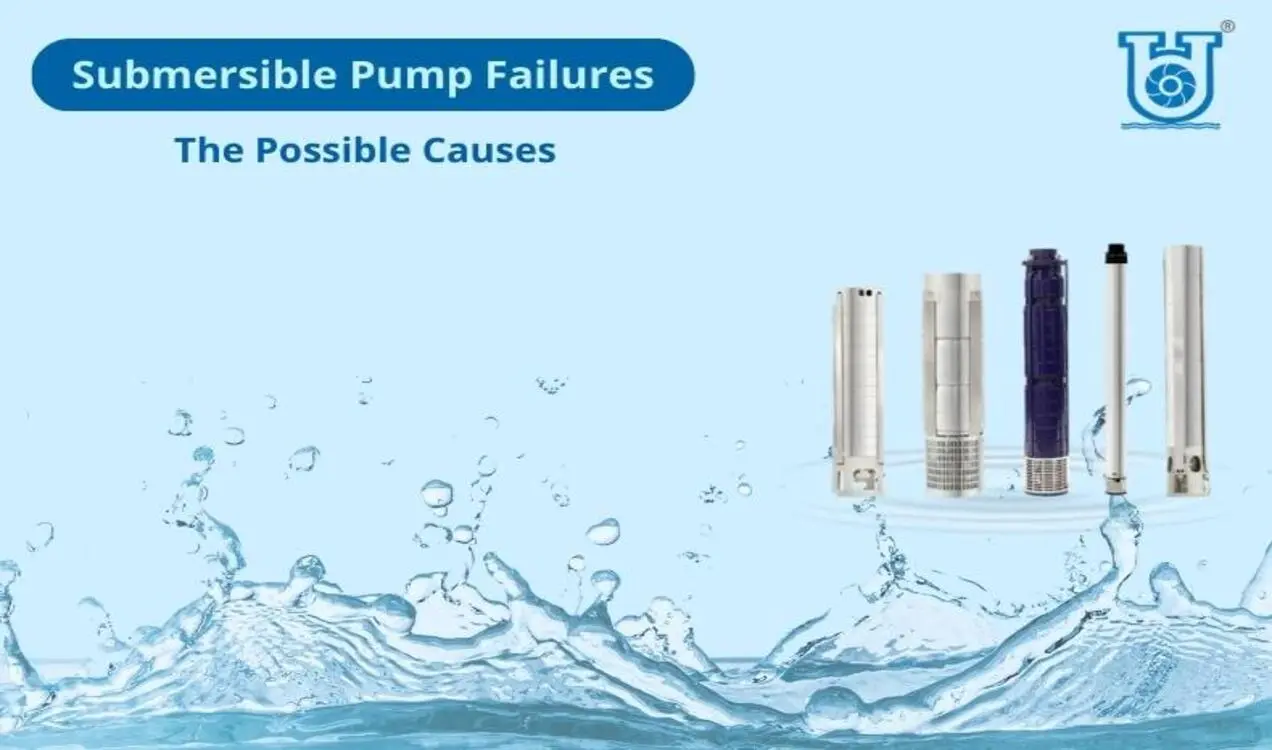Submersible pumps are crucial equipment used in numerous sectors. They are intended to be entirely submerged in liquid, enabling effective pumping solutions for applications such as wastewater management, irrigation, and oil extraction. However, these pumps may occasionally malfunction, resulting in significant downtime and productivity losses.
Understanding the Reasons for Submersible Pump Failures
Lack of Maintenance
Regular maintenance is crucial for submersible pumps to operate effectively. Neglecting normal maintenance activities might have significant implications on pump performance. Accumulated dirt and debris may choke the pump, impellers, and pipelines, leading to lower performance and probable blockages. Moreover, failure to repair worn-out components, such as seals or bearings, may result in leaks and further damage. To preserve the lifetime and dependability of submersible pumps, regular maintenance, including cleaning and component replacement, should never be disregarded.
Overloading
Overloading is a frequent cause of submersible pump failures. It happens when the pump is exposed to operating circumstances that exceed its specified capacity. Operating the pump beyond its limitations might place undue strain on the motor and impellers, leading to premature wear and possible failure. The increased pressure or flow rate can also cause cavitation, which erodes impellers and reduces pump efficiency.
To avoid overloading, it is essential to understand the pump’s capacity and operate it within the specified limits. Monitoring the system’s requirements and ensuring proper sizing and matching of the pump to the application can help prevent overloading and extend the pump’s lifespan.
Electrical Problems
Electrical problems can significantly impact the performance and lifespan of submersible pumps. Issues with the power supply, such as insufficient voltage or faulty wiring, may lead to motor overheating and probable burnout. Electrical surges and short circuits can cause damage to the motor and other electrical components, resulting in pump failure. These problems can be caused by faulty wiring, improper grounding, or power fluctuations.
To mitigate electrical issues, it is crucial to ensure proper electrical installation, including appropriate wiring and voltage compatibility. Regular inspections and maintenance of electrical connections and components can help identify and address potential problems before they escalate.
Water Quality
Water quality plays a vital role in the performance and durability of submersible pumps. Impurities in the water, such as sand, silt, or chemicals, can cause corrosion and erosion of pump components. This can lead to leaks, reduced efficiency, and, ultimately, pump failure. Scaling and fouling of impellers and pipes can restrict water flow, increasing the pump’s workload and decreasing its lifespan.
To solve water quality concerns, it is necessary to install adequate water filtration and treatment technologies. Regular monitoring and cleaning of pump components may help offset the impact of water contaminants and guarantee maximum pump performance and durability.
Incorrect Pump Installation
Proper pump installation is vital for the successful functioning of submersible pumps. Incorrect installation may lead to different complications that might result in pump failures. Inadequate priming or venting may generate airlocks, preventing the pump from working properly. Misalignment of pump components, such as the motor and impellers, may lead to excessive vibration and early wear.
Insufficient support or anchoring might result in pump movement, causing mechanical breakdowns. To prevent these concerns, following suitable installation procedures and standards is crucial. This involves ensuring appropriate priming, positioning components properly, and providing enough support to minimise additional stress on the pump.
Mechanical Wear and Tear
Like any mechanical component, submersible pumps incur wear and tear over time. Components such as seals, bearings, and impellers are prone to fatigue failure, especially in high-demand applications. Excessive vibration due to misalignment, cavitation, or insufficient support may further increase wear and tear, lowering the pump’s lifetime.
Cavitation
Cavitation is a phenomenon that happens when the pressure on the liquid being pumped goes below its vapour pressure, resulting in the creation and collapse of vapour bubbles. Cavitation may adversely influence submersible pump performance by eroding impellers, destroying seals, and limiting flow capacity. Modifying impellers and maintaining correct suction conditions may help prevent cavitation.
Improper Pump Selection
Selecting a suitable pump for a certain application is crucial. Mismatched pumps, either big or undersized, may lead to inefficiencies and premature breakdowns. Factors such as flow rate, head, and the properties of the liquid being pumped should be carefully examined. Seeking expert guidance throughout the pump selection process may help assure optimum performance and lifespan.
Environmental Factors
Environmental circumstances may play a major impact in submersible pump failures. Extreme temperatures, both hot and cold, may influence motor performance and induce thermal stress. Submersion in corrosive or abrasive chemicals may lead to rapid wear and corrosion of pump components. Contamination from chemicals or contaminants may potentially impact the pump’s performance and lifetime.
Human Error
A human mistake may contribute to submersible pump failures. Errors during installation, operation, or maintenance, such as faulty assembly or misuse, may lead to immediate or long-term harm. Lack of training and expertise regarding pump systems might result in erroneous practices or poor troubleshooting. Following manufacturer rules and giving sufficient training and supervision helps decrease human mistakes.
Conclusion
Understanding the probable reasons for submersible pump failures is vital for ensuring dependable and effective operations in many sectors. Regular maintenance, appropriate installation, and pump selection based on application requirements are critical preventative measures.
Embracing technology for monitoring and diagnosing pump faults may also benefit early identification and timely maintenance. Collaboration with professionals in the area assures maximum pump performance and avoids the possibility of expensive downtime. By addressing the causes of pump failures early, companies may boost production and avoid interruptions.


